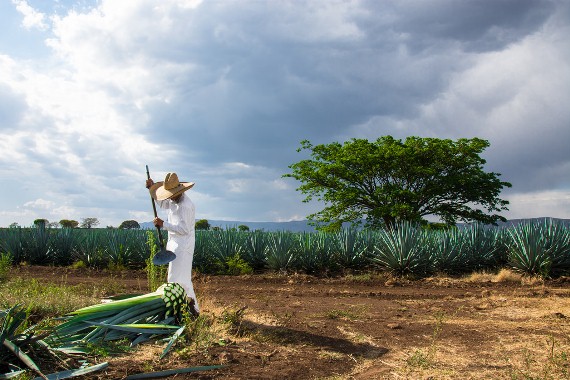Five things that you absolutely must know in order to help you develop a healthy relationship with what is, in reality, a beverage from the gods. Tequila!

“I wanted to forget her Jalisco-style, but those mariachis—and that tequila—brought the tears to my eyes…”
Pedro Infante
Few products are more closely associated with Mexico abroad than tequila. White or golden, harsh or smooth, tequila is savored in many different varieties and many different variations throughout the world. Yet like many aspects of Mexico, tequila is a very misunderstood and much misaligned spirit that many associate with a harsh taste and a bad hangover.
But what is tequila really? Does it have a worm? Is it made from a cactus? Is that hangover really so bad because of tequila or because the tequila was so bad because it wasn’t really tequila?

Here are five things that you absolutely must know in order to help you develop a healthy relationship with what is, in reality, a beverage from the gods.
Tequila comes from Tequila

While that may seem redundant, it is in fact essential. Like those fake Gucci purses that carry the name but are nothing more than cheap imitations, many a drink have arisen that have dared to call themselves tequila. But they weren’t. They aren’t. And they never will be. Tequila is in fact a town in the Mexican state of Jalisco. The word is derived from the Nahuatl language and aptly means “place of tribute.” Today, for a tequila to actually earn its name, it must carry the Designation of Origin seal indicating that the tequila has been produced within a certain region of Central Mexico and that it has been made from 100% pure blue agave.
Blue agave is not a cactus

Agave tequilana or blue agave is a perennial plant native to a certain region of Central Mexico. Cultivated at an elevation of 5,000 ft. above sea level, the plant can grow to be over seven feet tall. Tequila is produced from removing the piña or heart of the agave plant, which can weigh up to 200 pounds. To make tequila from these hearts, which are generally anywhere from 8 to 12 years old, the sap—known as aguamiel or agave nectar—is removed through a heating process and is then fermented and distilled.
Tequila is a gift from the gods

The gods have brought us many things; rain, sunlight, the seven seas, even war and strife. And tequila. According to legend, this sweetly fermented beverage offered to us as a gracious gift by the generous gods of the Nahuatl people was first discovered when a bolt of lightning shot down from the sky and struck a beautiful specimen of blue agave, splitting the noble specimen in two. Suddenly, a delicious smell arose from the once mighty plant, which the locals then proceeded to happily taste. The rest is history. And mariachi music, of course.
Jimador is more than just a brand of tequila

A jimador in Mexico is more than just a brand: it’s the dignified profession of those whose job it is to extract the blue agave’s piña from its source. The jimador is an expert craftsman with the eye and wisdom of an experienced farmer and the hand of a noble swordsman. He is the one who braves the heat to expertly cut the leaves off of the heart with one precise swing of his razor-sharp sickle; the one who with just a single glance can identify the piñas that are ready to be cut and sent off on their way to becoming the fine nectar that is tequila.
Real tequila won’t give you a hangover

Tequila is a drink made to be enjoyed. With so many varieties of cheap imitation tequila invading the shelves of liquor stores and shopping centers worldwide, it is perhaps no wonder that many a person associates tequila with that pounding sensation felt when waking up the next morning after having taken the sage advice of George Carlin: “One tequila, two tequila, three tequila, floor…” Nevertheless, much like a good wine, quality tequila is to be sipped not slammed, drunk straight with no chaser or with an added touch of salt, never with overly sugared faux-Margarita mixtures. Done right and with style, you will wake up the next morning thanking tequila and the gods that made it possible for such a wonderful experience the night before. If, of course, you drink responsibly, which we all know you will.

So now you know. You have been forewarned. Whether on your next trip to Mexico with Amstar, celebrating Cinco de Mayo or whatever other excuse you have found as a reason to imbibe this celestial gift, feel safe knowing that you now have the knowledge to do so properly—and pain-free. And by the way, if you find a worm in your bottle of tequila, don’t drink it. Tequila should never have a worm, nor any other insect for that matter. Perhaps you could find a worm in a bottle of mezcal, a close relative of tequila, but that is a story for another post.
Cheers!







